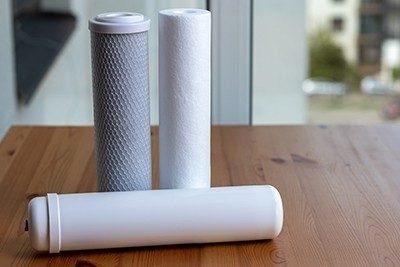Reviewed by Alex SmithDec 1 2022
Even top-quality water filter systems tend to allow a few things through, but engineering better materials and then assessing them is a laborious and challenging task.
 AI could help improve the materials used in typical water filtration membranes, such as the ones here so that they can remove a wider variety of contaminants. Image Credit: Bykfa/Shutterstock.com.
AI could help improve the materials used in typical water filtration membranes, such as the ones here so that they can remove a wider variety of contaminants. Image Credit: Bykfa/Shutterstock.com.
Currently, scientists in ACS Central Science state that artificial intelligence (AI) could accelerate the advancement of up-and-coming materials. In proof-of-concept research, they replicated diverse patterns of water-repelling and water-attracting groups coating a filter’s porous membrane and discovered ideal arrangements that should allow water through effortlessly and hold back some impurities.
Filter systems, comprising faucet attachments, room-sized industrial systems, and others, purify water for drinking and other purposes. However, existing filtration membranes find it difficult if the water is very dirty or has minute, neutral molecules, such as boric acid—a widely prevalent insecticide used on crops.
This is because artificial porous materials are usually limited to categorization compounds by either charge or size. However, biological membranes contain pores composed of proteins, such as aquaporin, that can divide water from other molecules by size and charge because of the diverse types of functional groups, or groups of atoms, covering the channels.
Motivated to achieve the same with an artificial porous material, M. Scott Shell and colleagues aimed to use computers to engineer the inside of a carbon nanotube pore to filter water containing boric acid.
The scientists replicated a carbon nanotube channel with hydroxyl (water-attracting) and/or methyl (water-repelling) groups tied to each atom on the inner wall. Then, they engineered and tested thousands of functional group patterns with enhancement algorithms and machine learning, a type of AI, to evaluate how rapidly water and boric acid would travel via the pore. This is what they discovered:
- The ideal patterns possessed one or two rows of hydroxyl groups sandwiched between methyl groups, developing rings around the pore’s midsection.
- In these recreations, water moved via the pore almost twice as quickly as boric acid.
- Another set of recreations demonstrated that other neutral solutes, such as benzene, phenol, and isopropanol, could also be separated from water using the enhanced carbon nanotube designs.
This research shows AI’s practicality in creating water purification membranes with unique properties, the scientists say. This could form the foundation of a new type of filter platform. They further state that the technique could be modified to design surfaces that could have novel interactions with water or other molecules, such as coatings capable of resisting fouling.
The researchers received funding from the U.S. Department of Energy (via the Center for Materials for Water and Energy Systems (M-WET), an Energy Frontier Research Center) with additional support from the U.S. National Science Foundation, the Materials Research Science and Engineering Center, the California NanoSystems Institute, and a National Science Foundation Graduate Research Fellowship.